The Red Sea is popular with divers all over the world. Its warm waters make it a uniquely diverse marine ecosystem, with thousands of species of coral, fish, and yes, sharks. This article will describe some of the shark species found in the Red Sea and assess how safe it is to swim and dive there. Are you ready to see what lurks beneath the surface? Let’s dive in.
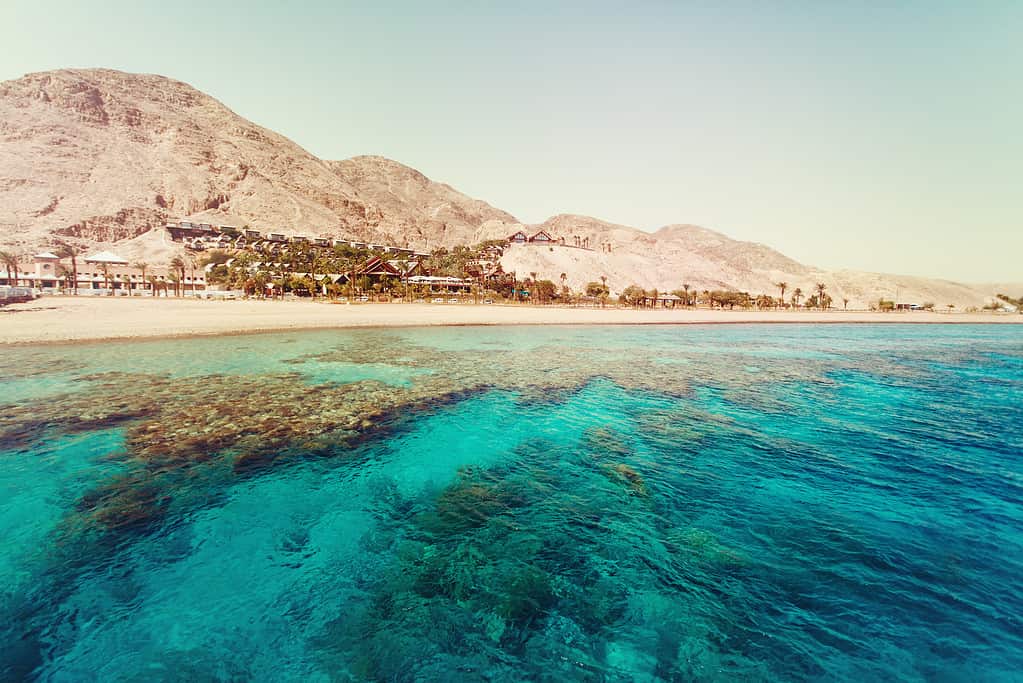
The Red Sea attracts millions of tourists every year.
©DariaZu/iStock via Getty Images
Location of the Red Sea
The Red Sea is part of a sinking rift that stretches from The Dead Sea all the way down the east coast of Africa through the Great Rift Valley down to Mozambique and Malawi. It’s a region where the earth’s tectonic plates are pulling apart and will one day split off East Africa and form a new ocean.
Description of the Red Sea
Size
The Red Sea is about 1,200 miles long and 190 miles across at its widest. The surface area of the sea is about 174,000 square miles. Its depth is a little trickier to estimate. About 40% of the Sea is less than 330 feet deep. However, when this is averaged in with its deepest troughs, at 9,970 feet, the average turns out to be 1,608 feet. Generally speaking, though, remember that the Red Sea has very large shallow areas that are ideal for coral, fish, and sharks, as well as plunging depths where 16 species of cetaceans can swim, including humpback whales, as well as intriguing species found only in the deepest seas.
Temperature and Salinity
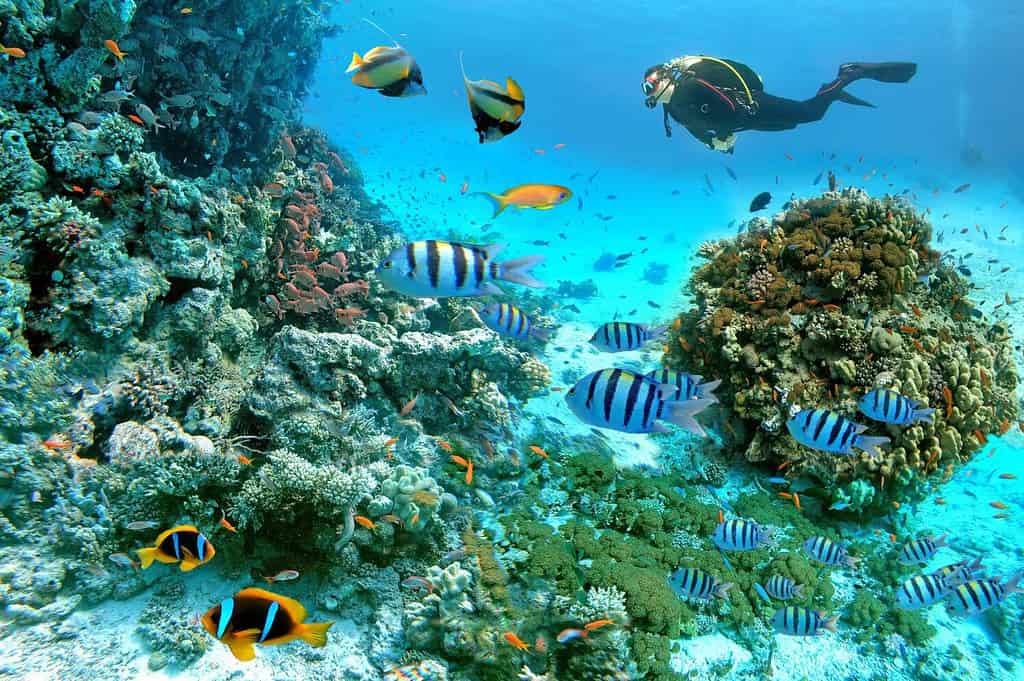
The temperature, depth, and salinity of the Red Sea makes it an ideal habitat for hundreds of species of coral.
©branislavpudar/Shutterstock.com
In addition to its variable depths that provide homes for a wide diversity of creatures, the temperature and salinity of the Red Sea play a major role in the types of life that thrive there. It is considered the most northern of all the planet’s tropical seas. On average, the water temperature hovers around 71°F, though it can reach as high as 86°F in summer. It is also extremely salty, with an average salinity of 40%, compared to about 35% in the rest of the world’s oceans. This is due to the fact that it is mostly surrounded by deserts that provide little inflow of fresh water and that it is located in a region of high temperatures and high evaporation.
Sharks in the Red Sea
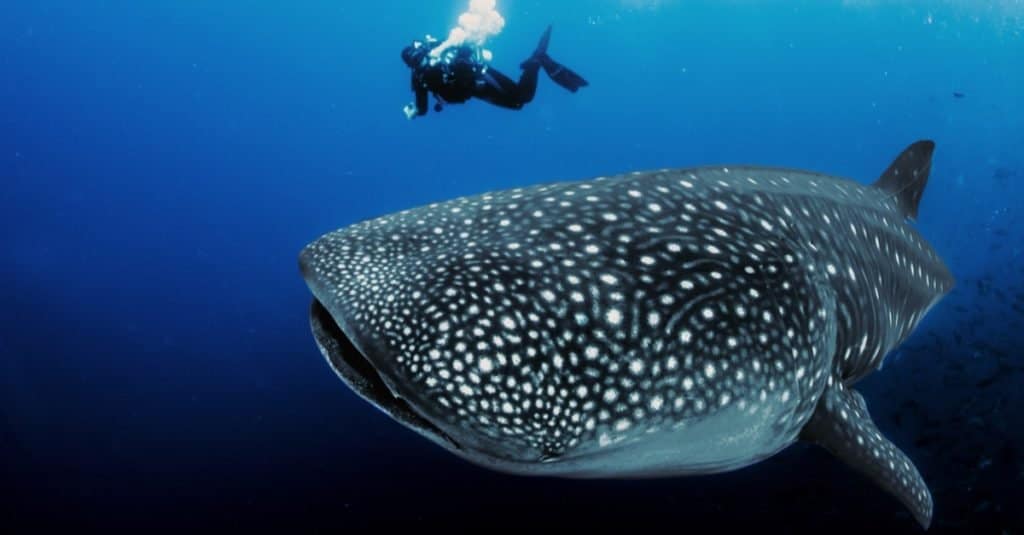
The
whale shark
is the largest, and most harmless shark species you may be fortunate enough to encounter while diving in the Red Sea.
©Lindsey Lu/Shutterstock.com
The Red Sea is home to about 1,100 species of fish and 250 types of coral. The high salt levels of the sea are ideal for coral. There are also 44 shark species indigenous to the Red Sea. Two of the species that are considered most dangerous to people are the tiger shark and the grey reef shark. Here are some examples of the kinds of sharks in the Red Sea, but not an exhaustive list:
- Arabian smoothhound
- Bigeye houndshark
- Bignose shark
- Blacktip shark
- Blacktip reef shark
- Bull shark
- Common thresher
- Dusky shark
- Great hammerhead
- Grey reef shark
- Hooktooth shark
- Milk shark
- Oceanic whitetip shark
- Pelagic thresher
- Sand tiger shark
- Sandbar shark
- Scalloped hammerhead
- Sharpnose sevengill shark
- Shortfin mako
- Sicklefin lemon shark
- Silky shark
- Silvertip shark
- Sliteye shark
- Smooth hammerhead
- Snaggletooth shark
- Spinner shark
- Spottail shark
- Starspotted smooth-hound
- Tawny nurse shark
- Thresher sharks
- Tiger shark
- Whale shark
- Whitetip reef shark
- Zebra shark (or leopard shark)
Is it Safe to Swim in the Red Sea?
Anytime a person chooses to swim in the ocean they can face a variety of possible dangers. We’re stepping in a habitat that is not our natural home and we are not as well-adapted to detect and escape danger in it as the creatures that live and hunt there. That having been said, taking reasonable precautions can make swimming in the Red Sea a positive, memorable experience.
The Odds of Being Attacked by a Shark
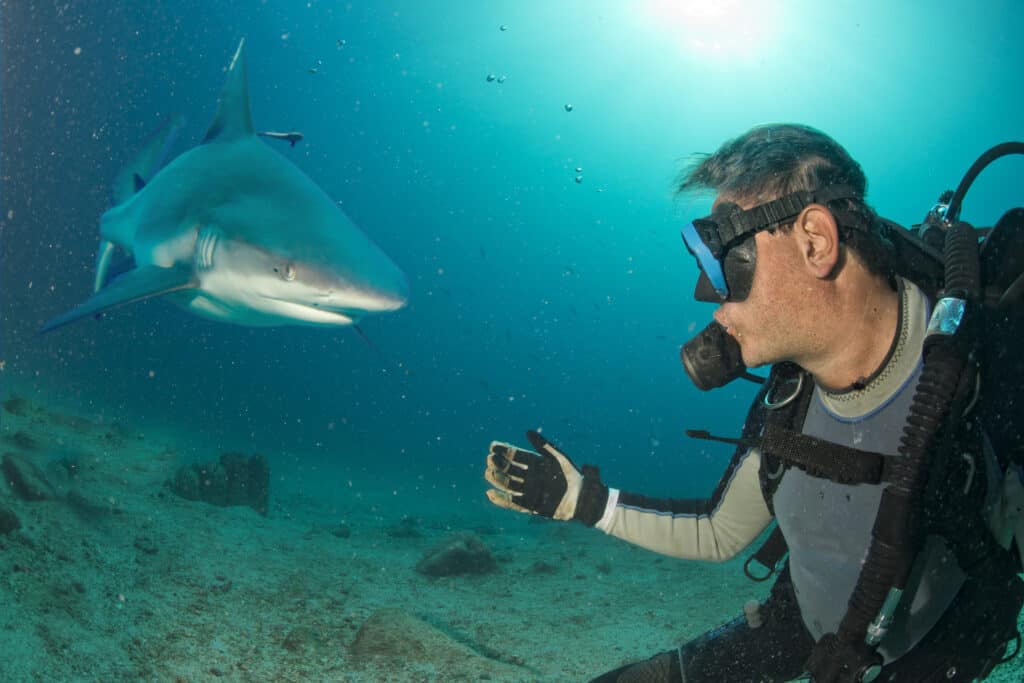
Though sharks rarely kill people, they still cause injuries. Experienced divers are trained to assess the danger and protect themselves.
©Andrea Izzotti/Shutterstock.com
In the entire world, only about 10 people are killed by sharks each year. In the United States, you are more likely to be killed by a cow, dog, snakebite, or a vending machine falling on you than dying from a shark attack. Shark attacks are rare on the Red Sea coast, with less than one attack reported per year despite the millions of people who vacation and work on the sea. In Egypt alone, 4 million tourists a year vacation at the coast. However, 2022 was an unusually bad year for shark attacks, as an Austrian and a Romanian tourist died from Red Sea sharks in the same year.
Dangers Other Than Sharks

The Red Sea has quite a few stinging, biting, and venomous forms of marine life.
© NatureDiver/Shutterstock.com
Sharks are not the only hazards to watch out for when swimming in the Red Sea. Here are some other areas where you need to exercise caution:
- Weather – High winds or recent rains can cause choppy water and low visibility, which increases danger to swimmers and divers.
- Strong currents – With the variable depths and unpredictable weather conditions, strong currents can pose a danger to swimmers and divers.
- Dangerous species – The Red Sea has quite a few venomous, stinging, biting, or stabbing sea creatures you don’t want to tangle with. Watch out for stonefish, scorpionfish, lionfish, moray eels, cone snails, jellyfish, stingrays, and sea urchins. Fortunately, these mostly stay on the ocean floor so they are not a problem if you’re swimming near the beach and don’t disturb the ocean floor and reefs when you’re diving.
How to Protect Yourself From Shark Attacks
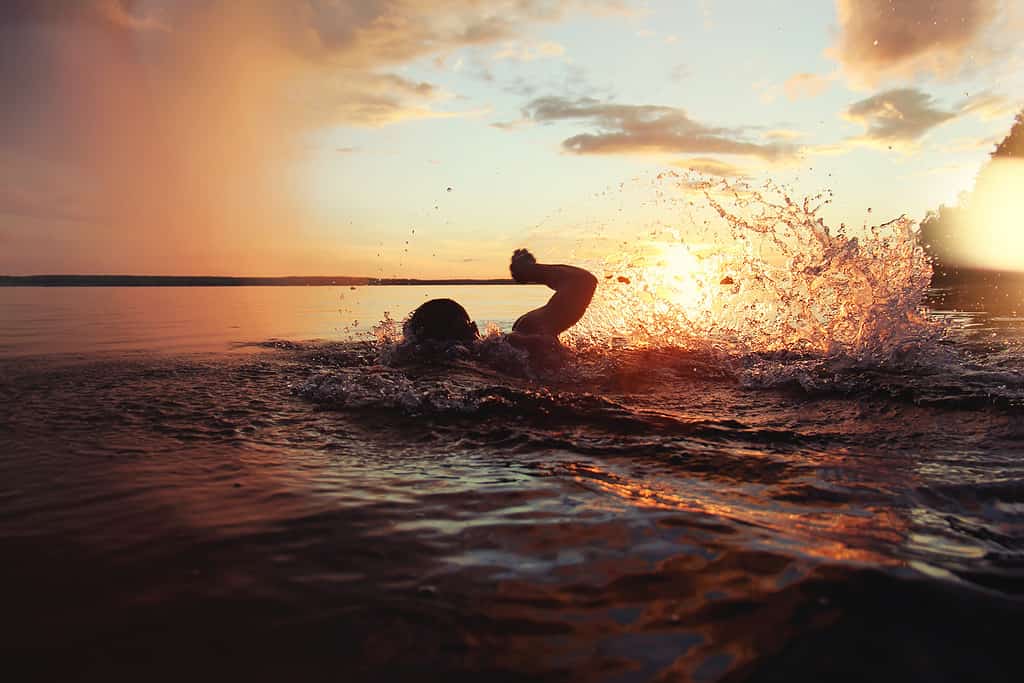
Splashing in the water can attract sharks.
©LeonidKos/iStock via Getty Images
Experts recommend these measures to help protect yourself from shark attacks:
- Don’t swim at night or at twilight as that’s when sharks are most active.
- Don’t swim while bleeding or menstruating, as sharks smell even small amounts of blood.
- Don’t wear shiny jewelry, as it glistens in the water like fish scales.
- Don’t wear sharply contrasting colors as sharks can see contrast well.
- Sharks are drawn to splashing, which can indicate an animal in distress.
- If you let your dog swim in the water, its splashing and smaller size can attract sharks.
- Swim in groups as sharks tend not to bother groups, and you’ll have people to help you if they do.
- Sharks like to hunt around steep underwater drop-offs or in the water between a couple of sandbars. Stay away from those areas.
- If you see diving seabirds catching fish in an area, stay away from there. There’s a school of fish there, and where there are large numbers of fish, there are sharks.
- Don’t swim in areas without a lifeguard or diving expert.
Will Dolphins Save You?
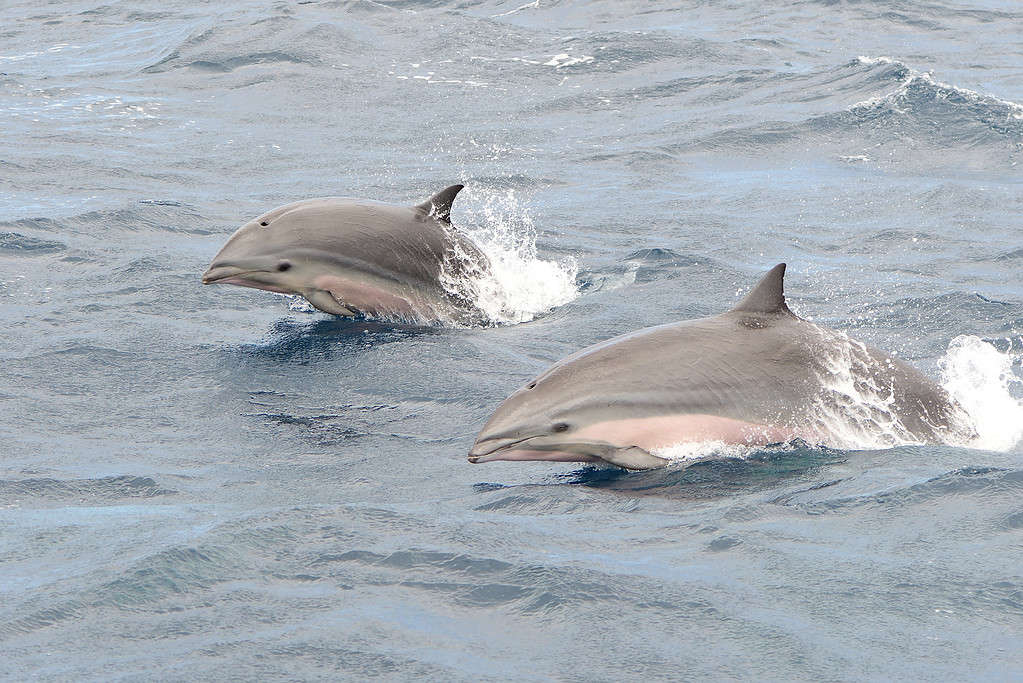
Wild dolphins are not always friendly, nor do they always save people from sharks.
©Tom Meaker/Shutterstock.com
Finally, we’ve all heard heart-warming stories of dolphins surrounding people to defend them from shark attacks. That doesn’t mean they always do, and in fact, sometimes dolphins themselves can be aggressive with people when the mood strikes them. Dolphins and sharks feed on the same types of fish, so just because you see dolphins in the area does not mean there are no sharks; in fact, the opposite may be true.
The photo featured at the top of this post is © HakBak/Shutterstock.com
Thank you for reading! Have some feedback for us? Contact the AZ Animals editorial team.







